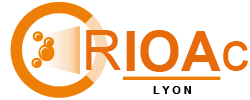The bacteriological diagnosis is difficult because the bacteria causing the infection :
- may belong to a wide variety of species. They are often species belonging to skin flora (risk of false positives can occur through contamination by the skin flora of the patient at the moment of sampling or handling and inoculation of the sample by caregivers)
- may present slow and/or difficult growth, like anaerobic bacteria, or fastidious growth like Kingella kingae, or a particular metabolic state, like bacteria in biofilm form, or small colony variants (SCVs), variants having undergone metabolic gene mutations
- may be limited in number, and only located near the infection site, or trapped within biofilm.


The techniques implemented in order to carry out this microbiological diagnosis at CRIOAc Lyon (from sampling to result delivery) meet the highest French standards and follow the Official Microbiology Guidelines (French title: Référentiel en microbiologie médicale) published by the Société Française de Microbiologie.
The recommendations specify traditional bacterial culture techniques. They are supplemented, when necessary, by molecular techniques, used to search for bacterial DNA, when the bacteria are not or no longer able to grow in the culture medium.
All samples are analysed at the Centre de Biologie et de Pathologie Nord (CBPN) lab in the Institut des Agents Infectieux (IAI), at the Croix-Rousse Hospital, which is a campus of Hospices Civils de Lyon.

This centre is one of the largest located on hospital grounds in France and was commissioned in November 2017. It has an automated microbiology laboratory worth approximately 3 million euros. There is an entire floor dedicated to microbiology (1300m²). It is manned 24 hours per day and 7 days per week. Delivery of osteoarticular samples follow a special protocol and are sent directly to the lab, so that the delay between the different operating rooms and the IAI is the shortest possible. There are extra measures to avoid contamination, and to maximise the chances of identifying the bacteria responsible for the infection, by culture or molecular biology techniques. The Centre National de Référence (CNR) des staphylocoques, which is in the same building as the IAI, has several national missions : (i) to provide microbiological expertise and identify multi-resistant strains and strains responsible for unusual clinical presentations; (ii) to contribute to epidemiological surveillance of staphylococcal infections and toxaemia by reporting to the Agence nationale de santé publique (Santé Publique France); and (iii) to report all unusual events to Agence nationale de santé publique (Santé Publique France).


